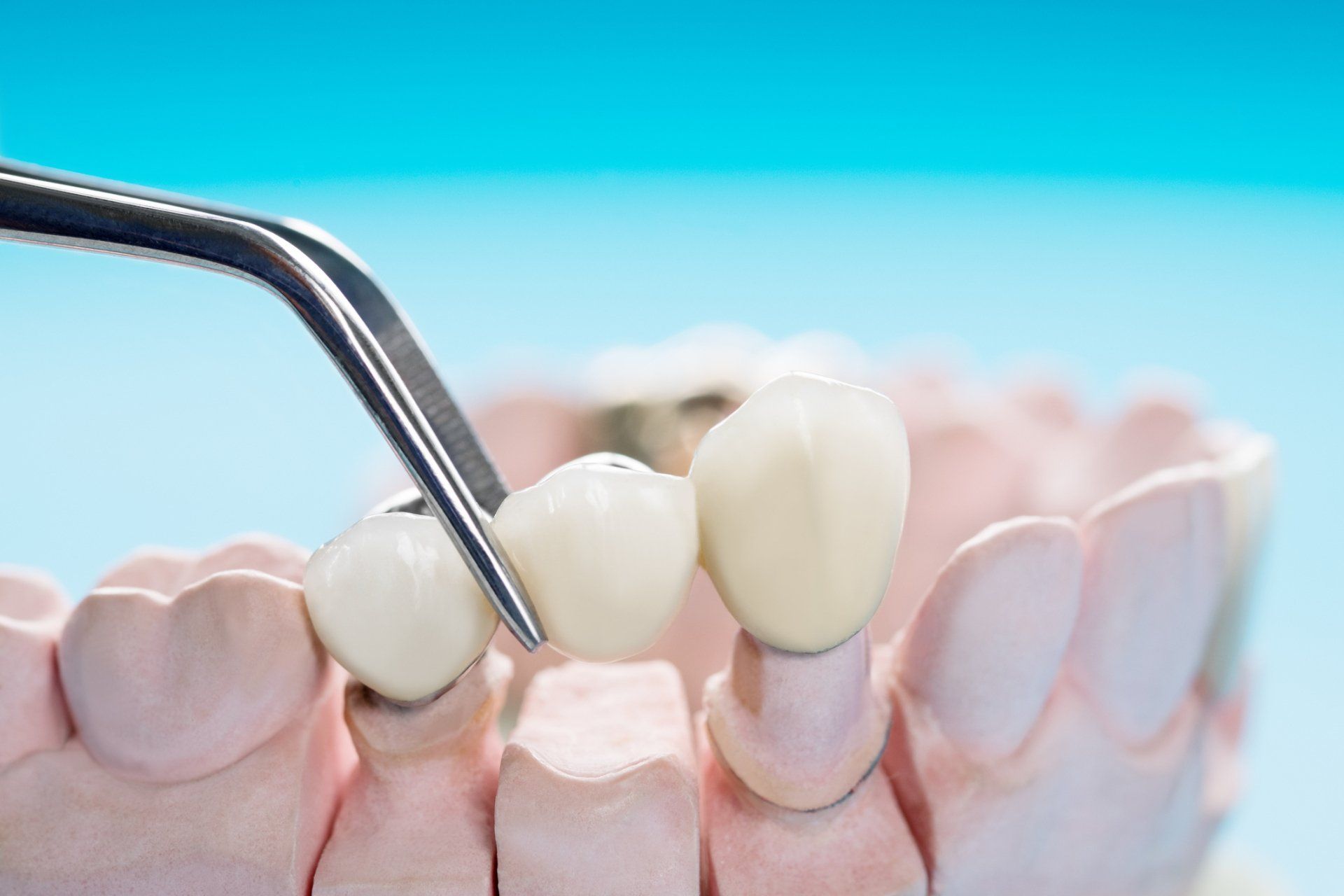Crown and Bridge

Slide title
Write your caption hereButton
Dental Crowns
A dental crown is constructed to restore a tooth to its original size and shape following extensive dental treatment like a root canal or extraction, advanced tooth decay removal or a broken tooth. Crowns can be made out of several types of materials. Porcelain dental crowns, in particular, are very durable and are popular among dental patients because they can be made to resemble the natural tooth.
Crowns are used for the following reasons:
- Decayed, broken, or cracked teeth will need dental caps or crowns to restore form, function, and aesthetics.
- A tooth that has received root canal treatment will need a crown to protect the tooth from possible fracture.
- Large fillings are prone to failure so crowns are often placed instead.
Crown placement:
- The first appointment includes taking diagnostic models of your tooth to prepare for the construction of the final crown. At the same appointment your dentist will numb the tooth and prepare the tooth by removing decay and creating the ideal surface for your future crown. While the laboratory constructs your future crown you will be fitted with a temporary crown.
- At the Second appointment, which is generally scheduled two weeks after the first appointment, the temporary crown is removed and the custom crown is tried in to verify fit. At this point your dentist will make any necessary adjustments and permanently cement the crown in place.
Following each visit at our office you will receive home care instructions for how to best care for your new porcelain dental caps. Remember regular dental visits combined with good eating habits and oral hygiene help lengthen the life of your crown and even prevent you from needing additional dental crowns in the future.
Dental Bridges
A bridge is similar to a crown in that it restores missing tooth structure. The major difference is that a bridge restores one or more missing or damaged teeth between existing teeth. There are several types of dental bridges and the dentist is prepared to discuss the best option to fit your individual needs.
- The most popular type of bridge is the traditional bridge, which is constructed from a metal base that has porcelain layered on top of it to give it a natural tooth look.
- This type of bridge consists of two crowns that are supported by teeth and are on both sides of a missing tooth. An artificial tooth is attached to the anchor teeth creating a bridge. Filling the gap can be done by one or more teeth.
Reasons your dentist may recommend fixed bridges include:
- To maintain shape and function of the dental arch.
- To prevent drifting of the remaining teeth.
- To restore your chewing and speaking ability.
- To fill the space of missing teeth and even an upgrade from a removable partial denture to a fixed appliance.
Treatment for a fixed bridge will require two or more visits. At your first visit the dentist will take impressions that will be sent to the lab for constriction of your dental fixed bridges. At this same appointment the doctor will numb the teeth and prepare them for the bridge framework. Before you leave the office you will be fitted with a temporary bridge until your next appointment.
Once your final bridgework is complete from the laboratory you will return to our office for your second visit. At this visit your dentist will try-in this final bridge. If no adjustments are necessary then it will be permanently cemented in place.
Contact Information
Find us on:
Business Hours
- Mon - Thu
- -
- Friday
- -
- Sat - Sun
- Closed
Payment Options




CareCredit
Cash | Checks
Health Savings Account Cards


